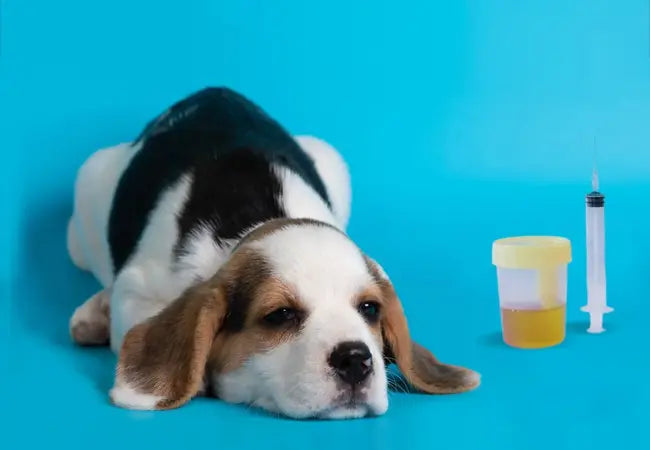Pet Urine Health Clues: 2025 Vet-Approved Diagnostic Guide 🐕💦

In this article
💧🩺 What Your Pet’s Urine Says About Their Health in 2025
By Dr. Duncan Houston BVSc
Your dog’s urine gives valuable health clues—its color, strength, and clarity may signal hydration issues, infections, crystals, organ disease, or toxins. This vet-approved guide shows how to collect samples, decode colors, and know when to see the vet. 🐕⚕️
1️⃣ Healthy Baseline: Straw to Amber Yellow
- Light yellow to amber = ideal hydration and generally healthy urine.
- Even “normal” doesn’t rule out issues—annual urinalysis helps detect hidden problems like protein or glucose.
2️⃣ Too Much Water? Very Pale or Clear
- Extremely dilute urine may result from excessive drinking or early kidney issues.
- Track pattern: occasional clear urine isn’t a concern; repeated episodes require vet evaluation.
3️⃣ Dark Yellow to Amber
- Often indicates mild dehydration—encourage water intake and monitor.
- If dehydrated due to illness (e.g., vomiting/diarrhea), water alone may not be enough—vet visit advised.
4️⃣ Orange, Brown, or Green Shades
- Orange/brown/or dark hues suggest bilirubin or hemoglobin, can mean liver, gallbladder, or pancreas disease.
- A greenish tint may indicate a kidney infection or bacterial presence—needs vet diagnostics.
5️⃣ Red, Pink, or Reddish-Brown
- Blood in urine = serious—could be UTI, stones, tumors, trauma vet, or bleeding disorders. The vet needs to perform urinalysis, culture, and imaging to determine cause.
6️⃣ Milky or Cloudy
- May indicate crystals, infection, WBCs, fat, or semen in intact males.
- Cloudiness and odor together often mean UTI or other bladder issues—vet check recommended.
7️⃣ Collecting a Quality Urine Sample
- Use a clean container → mid-stream catch → pour into a clear cup for color check.
- Use gloves; store sample refrigerated for vet if needed.
- Avoid surface color deception—collect directly or on a white pad.
8️⃣ What Your Vet Will Do
- Dipstick + sediment analysis → check for blood, protein, bilirubin, crystals, bacteria.
- Measure specific gravity to assess concentration/hydration and kidney function.
- Urine culture or imaging may follow depending on findings.
🔍 When to See the Vet
- Any red/pink/brown/green/cloudy urine. 🚨
- Persistent dilute or dark yellow urine with symptoms like excessive drinking/urination or appetite/behavioral changes.
- Frequent accidents, straining, or changes in frequency.
📊 Urine Color Summary Table
| Color | Likely Cause | Next Steps |
|---|---|---|
| Straw yellow | Normal hydration | No action |
| Clear | Overhydration/kidney | Monitor & test if repeats |
| Dark yellow | Dehydration | Give water; vet if ill |
| Orange/brown/green | Liver/kidney disease | Vet diagnostics |
| Pink/red | Blood, infection, stones | Immediate vet visit |
| Milky/cloudy | Infection/crystals/etc. | Urinalysis |
🔍 Final Thoughts
Urine is more than waste—it’s a daily health insight tool! Regularly check your dog's urine color and behavior; early detection helps prompt treatment and better outcomes. When in doubt, contact your veterinarian for clarification and diagnostic testing. 🐾❤️
Need help collecting urine, interpreting results, or getting tests done? Download the Ask A Vet app for expert guidance anytime. 📱🩺






